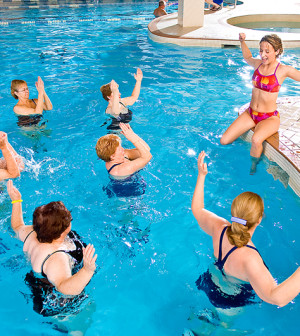- Skip Storing This Everyday Product in the Fridge Door
- Green Tea + B3 Pairing May Boost Brain Health
- Navigating Your Midlife Crisis: Embracing New Possibilities
- City Raccoons Showing Signs of Domestication
- Mapping the Exposome: Science Broadens Focus to Environmental Disease Triggers
- One Week Less on Social Media Linked to Better Mental Health
- Your Brain Changes in Stages as You Age, Study Finds
- Some Suicide Victims Show No Typical Warning Signs, Study Finds
- ByHeart Formula Faces Lawsuits After Babies Sickened With Botulism
- Switch to Vegan Diet Could Cut Your Greenhouse Gas Emissions in Half
Talk Therapy May Beat Light Treatment for SAD: Study

As winter’s short days approach, more people will suffer from the depression of seasonal affective disorder (SAD). Now, new research suggests that talk therapy is better than light-box therapy in preventing relapses of the ailment.
“SAD is a type of depression that follows a seasonal pattern based on the duration of sunlight present during the day,” explained one expert not connected to the study, Dr. Matthew Lorber.
“In the early 1980s, it was discovered that people were more likely to get depressed during the winter due to decreased exposure to sunlight,” said Lorber, who is acting director of child and adolescent psychiatry at Lenox Hill Hospital in New York City.
Lorber said that the American Psychiatric Association now recommends “light therapy” — timed, daily exposure to bright artificial light — as the treatment of choice for SAD.
The new study, led by psychology professor Kelly Rohan of the University of Vermont in Burlington, pitted light therapy against talk therapy in the treatment of SAD. The study included 177 people with SAD who received six weeks of treatment with either form of therapy.
The talk therapy was cognitive behavioral therapy, a treatment approach that taught people to challenge negative thoughts about dark winter months and to avoid behaviors, such as social isolation, that can harm mood.
In the first winter after initial treatment, both groups had similar relief from symptoms of depression associated with SAD, the findings showed. However, two winters after initial treatment, recurrence of depression symptoms occurred in 46 percent of those in the light therapy group, compared with only 27 percent of those in the talk therapy group.
Those in the light therapy group also tended to have more severe symptoms of depression than those who’d received the talk therapy, Rohan’s team said.
Many people also find it tough to stick to light therapy over the long term, Rohan added.
Patients have to “keep using the treatment for it to be effective,” she explained in a university news release. “Adhering to the light therapy prescription upon waking for 30 minutes to an hour every day for up to five months in dark states can be burdensome.”
The investigators found that, by the second winter, only 30 percent of patients in the light therapy group were still using the equipment.
In contrast, talk therapy is a preventive treatment, Rohan said. Once SAD patients learn the basic skills, the therapy has long-term effects that give them a sense of control over their depressive symptoms.
For his part, Lorber agreed that talk therapy shows real promise against SAD.
“Although more research needs to be done, this study shows how behavioral therapy plays a vital role in treating SAD and ultimately may serve as a cure,” he said.
The study was published online Nov. 5 in the American Journal of Psychiatry.
More information
The American Academy of Family Physicians has more about SAD.
Source: HealthDay
Copyright © 2025 HealthDay. All rights reserved.










